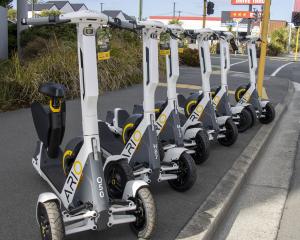
But after the procedure had finished the woman ended up with a blistering third-degree burn that required skin graft surgery and a week in hospital.
Now, the Health and Disciplinary Commission has found the clinic breached the Code of Health and Disability Services by failing to minimise harm and Auckland City Council has been recommended to step in and regulate.
Thermal shock lipolysis is a treatment offered in several beauty clinics that aims to reduce fatty deposits in unwanted areas.
In May 2021, Mrs A went in for her second appointment with the 10-minute procedure on her lower abdomen.
The procedure is normally expected to feel like a warm sucking sensation, but four minutes in, Mrs A became increasingly uncomfortable.
The applicator had reached a level beyond the standard 42C and due to a fault, failed to alert the technician it was beyond its heating range.
Mrs A advised the clinician, Ms B, that she was uncomfortable to which she responded ‘stick it out.’

As the procedure went along the pain became unmanageable and Mrs A requested the applicator be removed.
Upon removal, a large blister with damaged skin and a red, raw burn about 10cm by 10cm was revealed on her abdomen.
When Ms B went to get the clinic director, Mrs A told the commission the staff were joking about her pain tolerance.
She said the staff advised her the machine had a fault and was awaiting a new part, a comment they denied saying at the hearing.
Mrs A also said the medical attention received from the clinic, an ice pack and advice to see her GP, was not adequate.
Some weeks later and after multiple GP visits, Mrs A’s health declined and she was referred to the plastic surgeon’s unit.
The burn was found to have been deep and affecting nerve endings and on June 26, Mrs A underwent surgery to debride the burn site and apply a skin graft taken from her left thigh.
Following the incident, the clinic offered Mrs A LED light therapy and complimentary visits however Mrs A raised the complaint with the HDC concerned about regulations of the machine.
She also raised a complaint with WorkSafe and several regulatory boards in the industry.
WorkSafe found the clinic was not compliant with health and safety regulations to which the HDC agreed.
“The safety of professional beauty equipment that is sourced from abroad must be a fundamental consideration for beauty therapy providers, especially where that equipment can cause harm, such as burns.
“In previous investigations, I have referenced Auckland Council’s Health and Hygiene Bylaw, which requires certain health and beauty services to be licensed and to comply with separate health and beauty codes of practice.
“Based on my findings in this investigation, the district council may wish to consider introducing such a bylaw.”
The clinic was found to have made several failings including minimising the client’s pain, inadequate training and communication, failure to act on pain and failure to provide medical attention.
The commission also found that despite a warning temperatures should be checked before use, the clinic failed to do so.
“The TSL treatment Mrs A received at the clinic was clearly not of an appropriate standard. The injury she suffered was serious and should not have happened. I am concerned that the clinic did not have appropriate systems in place to safeguard Mrs A from harm during her TSL treatment, and that the clinic was aware of problems with the machine before it was used for Mrs A’s treatment.
“Although the New Zealand beauty industry is largely unregulated, there are clear standards regarding how the clinic should conduct itself as a provider of health and beauty treatments,” Commissioner Dr Vanessa Caldwell said in her decision.
Caldwell recommended the clinic provide a written apology and provide current first aid training for all staff within three months.
She also made recommendations to the Auckland City Council to adopt health and hygiene bylaws and requested the New Zealand Registered Beauty Professionals Board issue cautions about machines not meeting New Zealand regulations.













